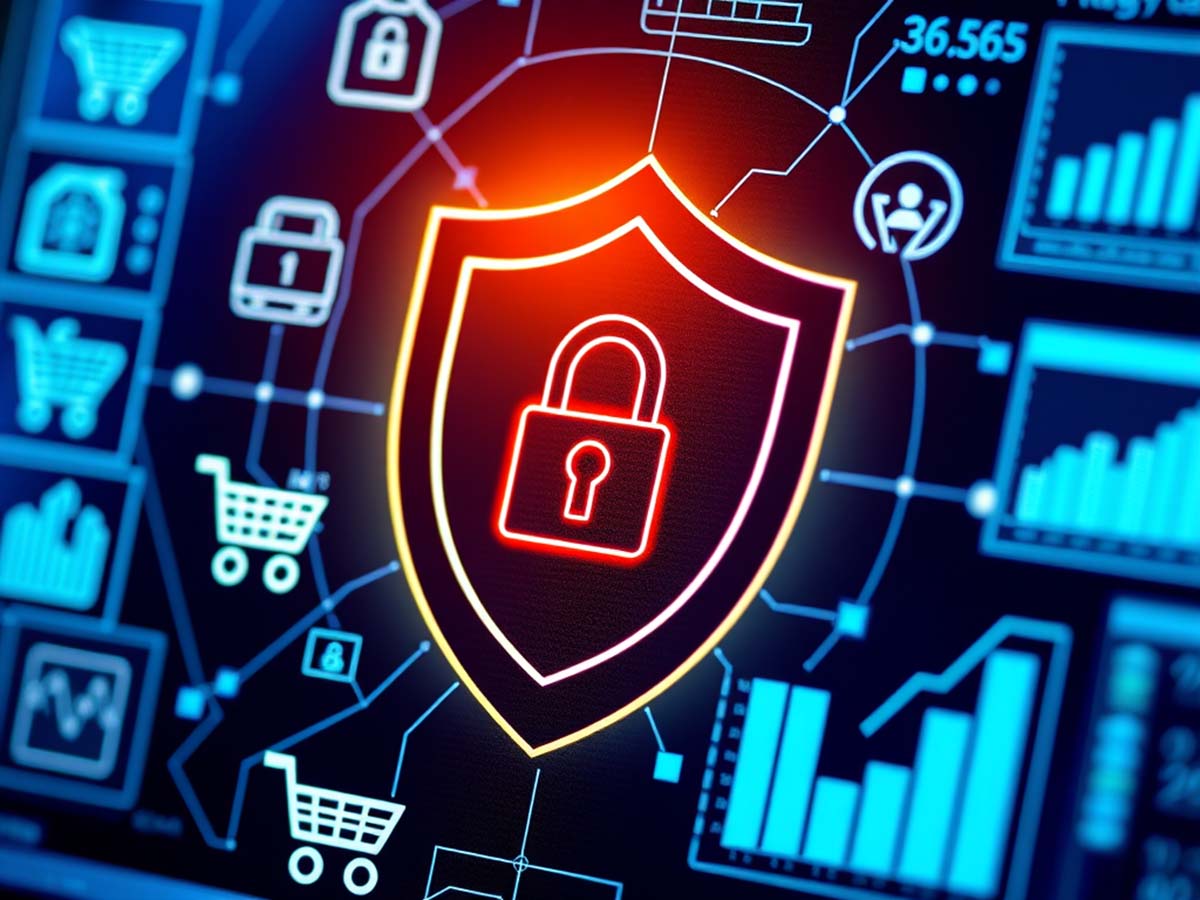
In a time when online shopping has become a part of everyday life, keeping personal and business data safe during transactions is more than a technical issue—it is a matter of trust and care. People from various backgrounds, whether small business owners or frequent online shoppers, have a stake in the safety of their digital interactions. Every click and purchase carries sensitive information that must be protected.
Understanding the Risks in Online Transactions
Cybersecurity in e-commerce means safeguarding all digital payment processes and personal data from misuse. When a person visits a website to buy a product, sensitive details such as credit card numbers, home addresses, and email addresses are transmitted. Without proper security measures, this information can be intercepted or misused.
For many, the idea of online shopping can feel uneasy. Imagine entering personal details on a website with few security signals. News of data breaches at various online shops shows that even a minor oversight can lead to major problems. This is why both sellers and customers need to stay informed about cybersecurity practices.
The Role of Cybersecurity in Building Trust
Trust forms the core of every transaction. Online buyers prefer stores that show a genuine commitment to protecting their data. A website that employs up-to-date security measures sends a clear message of care and reliability. For sellers, protecting customer data not only helps build loyalty but also enhances their reputation. A small business that takes extra steps to secure its online payment system might receive praise in customer reviews and social media, encouraging others to shop confidently.
Key Practices to Keep Data Safe
Simple, everyday actions can lower the risks associated with online transactions. Instead of listing every tip in bullet points, consider these practical practices as a combined approach. Avoid using public Wi-Fi for purchases or accessing sensitive accounts; a home network or trusted mobile hotspot offers better security. Creating strong passwords that mix letters, numbers, and symbols and updating them regularly also provides a robust defense. Keeping your software updated—whether it’s your e-commerce platform or the devices you use—ensures that security vulnerabilities are patched promptly.
It is also wise to check financial statements frequently to spot any unusual activity early. A well-informed team can make a significant difference; understanding phishing scams and common cyber threats goes a long way in preventing accidental breaches. Each of these actions acts like a small shield against potential threats, sparing businesses the frustration and expense of dealing with data breaches.
Real-Life Examples and Everyday Anecdotes
Consider a local retailer who recently expanded to online sales. Initially, the owner was cautious due to security concerns. However, after researching and implementing safety measures, the retailer not only saw increased sales but also received genuine appreciation from customers who valued the secure checkout process. This positive shift boosted the owner’s confidence in transitioning to the digital market.
Similarly, a frequent online shopper once received an email that appeared to be from a well-known shopping website, requesting account verification. Sensing something was off, the shopper reported the email, preventing any misuse of personal information. These everyday examples show that small, mindful actions can greatly impact online safety.
How Online Stores Can Improve Cybersecurity
For online store operators, maintaining a safe shopping environment is an ongoing task. It is not enough to invest once in security software; continuous attention is needed to address new threats. Regular system checks can help identify weak spots before they become problems. Encrypting data during transmission ensures that even intercepted information remains unreadable. Using multi-factor authentication adds another layer of protection by requiring extra verification during login, stopping unauthorized access even if a password is compromised. Regular data backups help businesses quickly resume operations in the event of a breach.
Moreover, communicating security tips to customers—perhaps through a blog post or a dedicated FAQ section—can educate them about recognizing phishing emails and other suspicious activities. When an online store actively invests in these practices, it demonstrates a commitment to customer safety, which can strengthen customer relationships.
The Role of Payment Gateways and Secure Protocols
Payment gateways serve as the link between a customer’s bank and an online store. Choosing trusted gateways that adhere to strict security standards is essential. These gateways often use advanced encryption protocols to secure data during transmission. They also comply with international standards such as the Payment Card Industry Data Security Standard (PCI DSS) to ensure that sensitive information is handled properly.
Modern payment gateways may also use tokenization, a method that replaces sensitive data with unique symbols, rendering intercepted data useless to cyber intruders. Many systems include fraud detection capabilities that monitor for unusual activity and alert store operators immediately. Even though the payment process must remain smooth for customers, ensuring robust security behind the scenes protects both the business and its customers.
Practical Advice for Everyday Online Shoppers
Cybersecurity isn’t solely the responsibility of online store operators; shoppers play a key role as well. When browsing, always verify that a website’s URL starts with “https://”, a sign of a secure connection. Although saving payment information online may seem convenient, it is safer to enter details for each transaction and clear your browser cache afterward. Email links that request personal information should be treated with caution, and it’s better to navigate directly to a website rather than clicking on an unfamiliar link.
Credit cards are generally a safer option than debit cards for online purchases due to better fraud protection measures. Additionally, installing antivirus software on devices can serve as an extra layer of defense against potential cyber threats. By adopting these habits, shoppers can enjoy the convenience of online shopping with increased confidence.
Team Effort for Online Safety
Creating a secure e-commerce environment requires collaboration between businesses and customers. When both sides commit to safe practices, the overall risk diminishes. Open communication about security protocols can make buyers feel more secure, and prompt reporting of suspicious activity allows businesses to act swiftly. Training employees to recognize and respond to cyber threats, even at a basic level, is another effective strategy.
When everyone takes responsibility, the result is a secure online community where both buyers and sellers contribute to a safer environment.
Clearing Up Misconceptions
Some believe that only large corporations are targets for cyber threats, but small online stores and individual shoppers can also be vulnerable. In fact, attackers may target smaller businesses because they sometimes have fewer resources to invest in security. Another common myth is that robust cybersecurity measures slow down online shopping. In reality, many security tools work in the background without affecting the user experience. These misconceptions can be overcome through proactive measures and continuous learning.
Personal Stories That Resonate
A freelance graphic designer who frequently shops online for supplies once experienced a security scare. After noticing unusual charges on a credit card statement, the designer acted quickly by contacting the bank and updating security settings. Although the experience was initially stressful, it reinforced the importance of staying informed and cautious. Such real-life incidents serve as a reminder that even small actions can prevent more significant problems later.
Looking Ahead: The Future of Secure Online Transactions
The landscape of digital payments is always advancing. New technologies continue to shape how online security is managed. While emerging tools, such as systems that detect unusual patterns using artificial intelligence, may seem complex, the main idea remains simple: continuous improvement in security helps keep transactions safer.
Businesses that adopt new security measures often experience fewer incidents and earn greater trust from customers. Meanwhile, informed and vigilant customers are less likely to fall victim to cyber threats. Although challenges persist in the digital realm, practical actions and technological advances are making everyday transactions safer for everyone.
Community of Safe Shoppers and Sellers
Every day, millions rely on secure online transactions for everything from shopping to managing personal finances. Both buyers and sellers play important roles in keeping this ecosystem safe. Regularly reviewing security settings, seeking advice from trusted sources when needed, and sharing useful information about online safety can help build a more secure community.
When everyone contributes in even small ways, the collective effort results in a safer online space for all.


No Comments